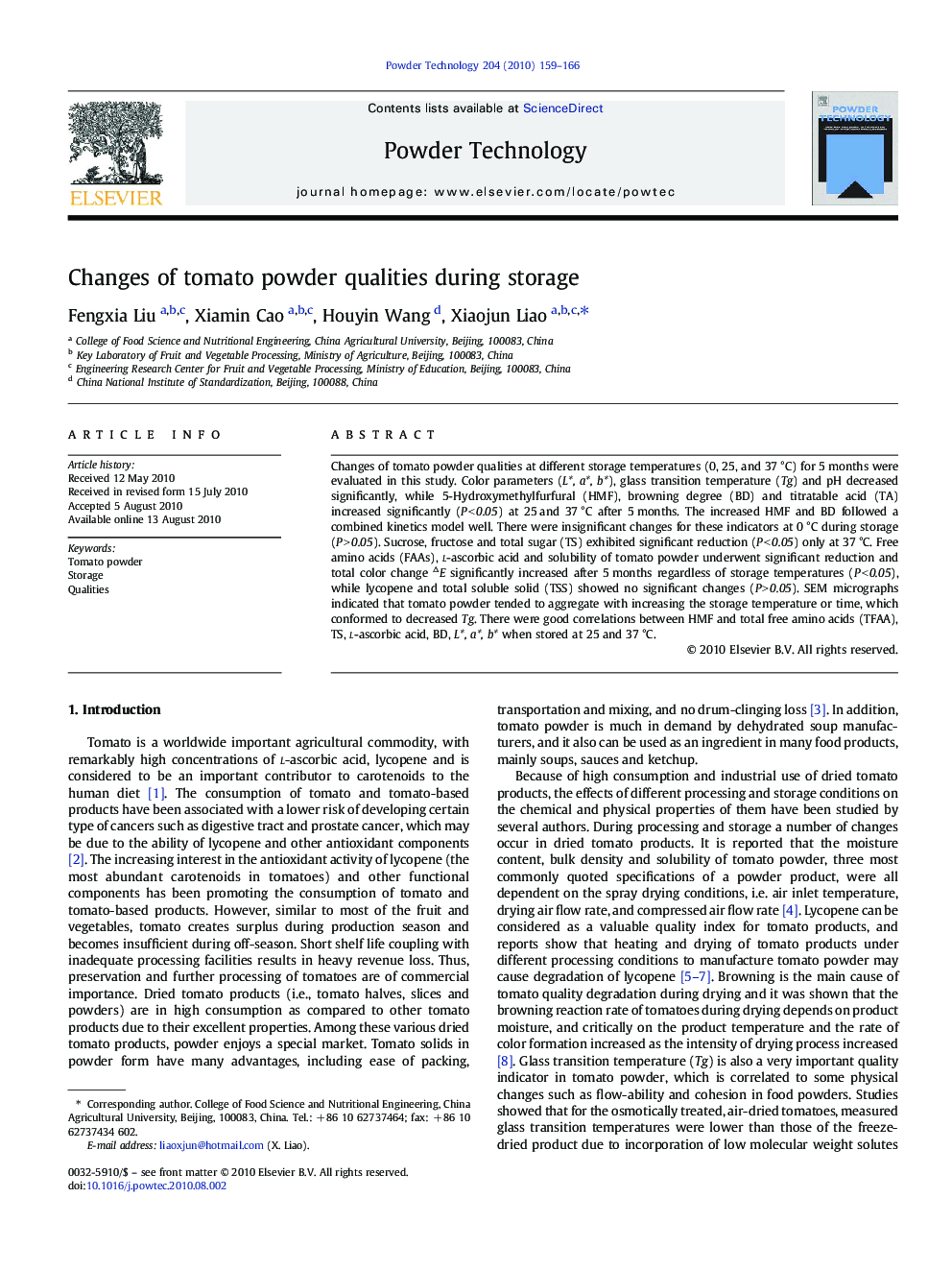| Article ID | Journal | Published Year | Pages | File Type |
|---|---|---|---|---|
| 237770 | Powder Technology | 2010 | 8 Pages |
Changes of tomato powder qualities at different storage temperatures (0, 25, and 37 °C) for 5 months were evaluated in this study. Color parameters (L*, a*, b*), glass transition temperature (Tg) and pH decreased significantly, while 5-Hydroxymethylfurfural (HMF), browning degree (BD) and titratable acid (TA) increased significantly (P < 0.05) at 25 and 37 °C after 5 months. The increased HMF and BD followed a combined kinetics model well. There were insignificant changes for these indicators at 0 °C during storage (P > 0.05). Sucrose, fructose and total sugar (TS) exhibited significant reduction (P < 0.05) only at 37 °C. Free amino acids (FAAs), l-ascorbic acid and solubility of tomato powder underwent significant reduction and total color change ΔE significantly increased after 5 months regardless of storage temperatures (P < 0.05), while lycopene and total soluble solid (TSS) showed no significant changes (P > 0.05). SEM micrographs indicated that tomato powder tended to aggregate with increasing the storage temperature or time, which conformed to decreased Tg. There were good correlations between HMF and total free amino acids (TFAA), TS, l-ascorbic acid, BD, L*, a*, b* when stored at 25 and 37 °C.
Graphical AbstractTomato powder exhibited different quality changes at different storage conditions. In general, higher temperatures (25 °C and 37 °C) had a significant effect on tomato powder qualities, while lower temperature (0 °C) had less effect. SEM micrographs indicated that tomato powder tended to aggregate with increasing the storage time or temperature. (a, initial sample; b, sample stored for 5 months at 0 °C; c, sample stored for 5 months at 25 °C; and d, sample stored for 5 months at 37 °C).Figure optionsDownload full-size imageDownload as PowerPoint slide
